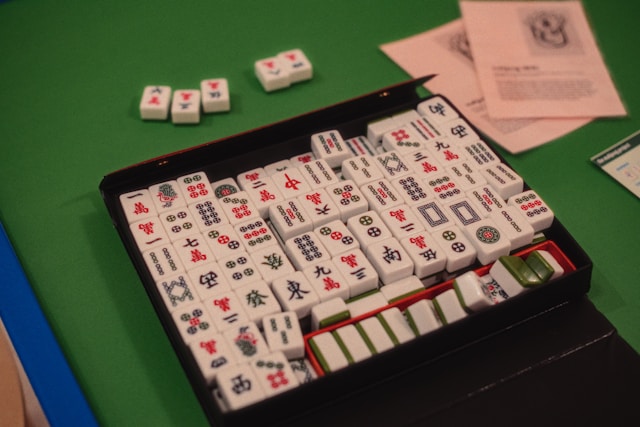The Cultural Journey of Mahjong and Poker
Mahjong and poker are two very distinct games with one thing in common: their spread across the globe. Both games are different in terms of gameplay, strategies, and components, however, Mahjong and poker both have origin stories draped in uncertainty and myth. Today, both games can be found across different cultures and countries, and variations have developed to meet the needs of diverse players.
Mahjong’s Origins and Journey
Mahjong has as many origin stories and many are quite bizarre. Some say Confucius created the game, while others say it was played on Noah’s Ark.
The truth is, Mahjong originated in Ancient China. There have been games similar to Mahjong for many years. Ya Pei was played during the Sung Dynasty using wooden cards. Ma Tiae was played during the Ming Dynasty, and resembles modern Mahjong. These games evolved into Mahjong in the mid-19th century, although the creator remains uncertain. Some say it was Chinese military officers, while others say it was a nobleman. The most popular theory is that two unknown brothers living in Ningpo were the creators.
Its modern form quickly spread beyond China. Westerners were introduced to the game in the early 20th century in British clubs in Shanghai.
Joseph Babcock brought the game to the US after playing it in China in the 1920s. The game quickly became a craze and was played by Babcock’s standardized rules (the Chinese version had no set rules).
During this time, Mahjong was banned in China during the Communist Revolution because the government feared peasants would become more intelligent by playing. The ban was lifted in 1985, and it quickly became popular. Today, there are many variations of Mahjong enjoyed across the world, including American Mah Jongg, Chinese Classical, and Riichi. It is commonly played by friends and family, although sites like Mahjong365 offer online versions where players can compete for real money.
Poker’s Global Spread
Poker’s origins can be traced back to either a domino-type game played by a Chinese emperor in the 10th century or a Persian game called As Nas in the 16th century.
In Europe, poker is linked to the 17th-century French game, Poque. However, Poque was based on the Spanish game Primero, which involved three cards and bluffing. The history of poker clearly matches the confusion of Mahjong’s origins.
Poque was brought to the US when French colonists settled in New Orleans. English settlers enjoyed the game and transformed it into poker with five cards and a 52-card deck. Poker spread from New Orleans throughout the rest of the country because of riverboat crews on the Mississippi who played.
Interestingly, poker headed back to Europe. Queen Victoria had the game explained to her in 1871 by the US Minister to Britain. The European popularity was further fueled by American soldiers during WWI.
Many poker variations have been created, including Texas Hold’Em, five-card draw, Omaha Hold’Em and seven-card stud.
Wrapping Up
Despite clear differences, poker and Mahjong are both games that combine skill, luck, and social elements. These games have ancient histories shrouded in uncertainty, but have spread across the world in many variations, weaving across cultures.

